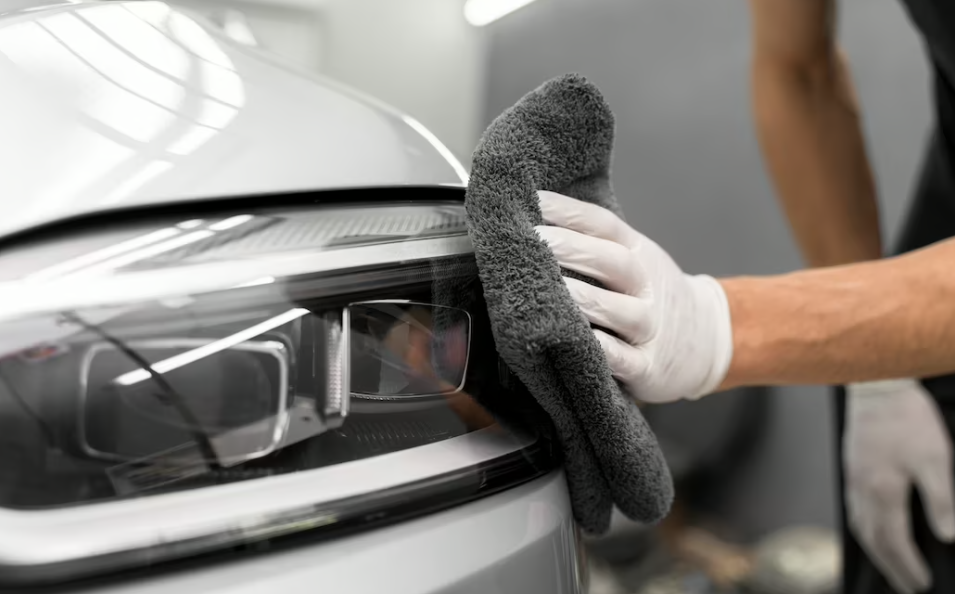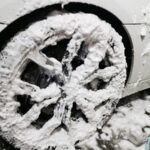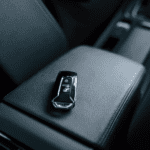
Car detailing is an important part of car maintenance. It not only keeps the exterior and interior of your vehicle looking great, but it can also help to preserve its value.
However, there are certain dos and don’ts when it comes to car detailing that you should be aware of in order to avoid common mistakes. In this article, we’ll explore the most important dos and don’ts of car detailing so you can get the job done right.
Preparing Your Vehicle For Detailing

Preparing your vehicle for detailing can be a daunting task. However, with the right strategies and techniques, you can ensure that it is done properly and efficiently.
One of the key elements to successful detailing is to use appropriate drying techniques and pre-washing methods. When it comes to drying your car, it is important to ensure that there are no water spots on the surface as this could lead to long term damage. You should also use a clean cloth or microfiber towel when drying off the car in order to avoid any scratches or scuffs on the paintwork. Additionally, using a high-quality wax or sealant before washing can help protect your vehicle from dirt and other contaminants.
When pre-washing, you should always start with a pressure washer at low settings and work your way up gradually, making sure not to use too much pressure which could cause damage. Once you have removed any dirt or debris from the car’s surface, you can then begin cleaning and polishing the exterior.
This will help give your car’s paint job an extra layer of protection against environmental factors such as UV rays, acid rain, bird droppings etc. As such, proper preparation of your vehicle for detailing is essential for achieving professional results. Moving forward with diligence and care will ensure that your vehicle looks as good as new!
Cleaning And Polishing The Exterior

Washing your car is one of the most important steps in the detailing process – it’s important to use a good quality car wash soap and a separate mitt or sponge to help avoid scratching the paint.
Claying is also important to remove contaminants that washing alone can’t, and a clay bar or clay mitt should be used.
Waxing is the last step and will help protect your car’s paint and shine – make sure not to use a wax that’s too abrasive or contains any harsh chemicals.
Lastly, always remember to rinse and dry the car after washing, claying, and waxing for the best results.
Washing
When it comes to washing and polishing the exterior of a car, using soap is essential. It’s important to use a soap specifically designed for cars, as traditional soaps will strip away the wax coating on the car.
Additionally, it’s important to be gentle when scrubbing the car – too much pressure can cause scratches and other damage.
When mopping floors, avoid using harsh chemicals that might strip away wax or damage the paint job. Instead, opt for a milder cleaning solution that is designated for automobiles and won’t leave behind residue.
Always make sure to rinse off any soap or cleaning solution with plenty of water before drying with a microfiber towel, as this will help prevent streaks from appearing on the car’s finish.
Finally, always dry off your car in an area that isn’t exposed to direct sunlight; otherwise, you risk overheating your paint job!
Claying
Another important step in cleaning and polishing a car is ‘claying’. This involves using a clay bar to correct swirls and other imperfections that traditional washing and polishing may not be able to fix.
The process usually requires special detailing clay and lubricant, which are available at most auto supply stores. To get started, you’ll need to spray the lubricant onto the surface of the car and then glide the clay bar along it.
As you do this, you’ll notice any dirt or contaminants being lifted away from the surface. Once you’ve finished claying, make sure to wipe off any remaining residue with a damp cloth or microfiber towel.
It’s an effective way of removing all kinds of embedded grime that just won’t come off with soap alone!
Waxing
Now that you’ve got the surface clean and free of swirls and other imperfections by using a clay bar, it’s time to move on to waxing. This should be part of your regular maintenance routine to keep your car looking shiny and new. Waxing will help protect the paint job as well as make it easier to clean any future dirt or dust off of the exterior.
There are two main types of car wax: liquid and paste. In general, liquid is best for newer cars with less wear and tear, while paste works better on older vehicles with more imperfections. Both can be applied in the same way — using a circular motion with a microfiber cloth or sponge — but you’ll need to wait longer for the paste to dry before buffing it off.
When applying wax, start at the top of the car and work your way down as this will make sure that any dripping wax doesn’t end up ruining your freshly cleaned surface. When done properly, you’ll be left with a glossy finish that will last for weeks!
Applying Exterior Protectants

Next, let’s move on to applying exterior protectants. While this step is often skipped by many, it’s actually a critical part of detailing your vehicle and should not be overlooked.
Here are three key steps to follow when waxing your car:
- Start with a clean car surface: Make sure your car is as clean as possible before beginning the waxing process. It’s important to use a drying technique that eliminates any water droplets left behind after washing and rinsing.
- Apply the wax in thin layers: Applying too much wax can create an unappealing finish, so it’s best to apply thin layers of wax at a time until you get the desired result. To do this properly, use circular motions when rubbing the wax into the paintwork.
- Allow for proper curing time: After completing the previous steps, allow for enough time for the wax to cure and harden before using any towels or other materials to buff out excess residue from the surface of your car. This will ensure that you get the best protection out of your wax coating.
The next step in detailing your vehicle is cleaning and protecting its interior!
Cleaning And Protecting The Interior

When it comes to detailing the interior of a car, there are several steps to follow in order to get the best results.
The first step is to make sure that you are using the correct products for cleaning and protecting the interior. Using the wrong products can make matters worse, so be sure to do your research before purchasing any supplies.
In addition, it’s important to use the correct cleaning techniques. For example, don’t use harsh chemicals or abrasive materials on delicate surfaces like leather or wood grain. Instead, opt for gentle cleaning solutions and soft cloths or applicators when dealing with these materials.
It’s also important to avoid using too much water when wiping down surfaces as this can cause damage over time.
Once you have selected the right supplies and developed a set of cleaning techniques that work best for your car’s interior, it’s time to move on to finishing touches and maintenance tips.
This could include applying waxes or sealants, deep-cleaning carpets and upholstery, or adding protective coatings to help maintain the car’s shine and condition.
Finishing Touches And Maintenance Tips

Now that the interior of your car is looking its best, it’s time to add those finishing touches.
Maintaining wax is a great way to protect the exterior of your car from the elements and give it a nice shine.
If you have leather upholstery, using a good quality leather conditioner will help keep it soft and supple while protecting it from damage.
Don’t forget to clean and protect any fabric seats with a fabric protector to keep them looking their best.
Finally, make sure to check your car regularly for any damage or signs of wear.
Inspect your tires for uneven wear or deterioration and remember to change your oil according to the manufacturer’s specifications.
If you take care of the little things, it can go a long way in preserving the value and look of your vehicle.
Remember that detailing is an ongoing process that should be done on a regular basis in order for your car to look its best.
Taking some extra steps now can save you time and money down the road by avoiding costly repairs or replacements due to neglect.
Frequently Asked Questions
What Is The Best Type Of Car Detailing Product For My Vehicle?
When it comes to DIY detailing, the type of polish you use for your vehicle is critical.
For an effective shine and protection, it’s best to opt for a two-step process – first, use a cleaner wax to remove dirt, debris and oxidation; then finish with a high-quality carnauba wax or sealant.
Synthetic polymer sealants are also an excellent choice since they last longer than regular waxes.
Knowing which type of polish is best suited for your vehicle can save you time and money in the long run.
How Often Should I Have My Car Detailed?
How often you should have your car detailed depends on a variety of factors, such as the type of vehicle and its condition. Regular maintenance is essential to keeping your car looking and running in top shape.
In general, you should have your car detailed at least once every six months or so. If you live in a particularly hot climate, however, you may wish to consider more frequent detailing as the extra heat can accelerate wear and tear on cars.
Eco-friendly solutions such as waterless products are recommended for those who want to reduce their carbon footprint while still ensuring that their vehicles are kept clean and polished.
How Do I Know Which Type Of Protection Is Best For My Car’s Exterior?
It’s a common mistake to think that all car detailing is the same. But, when it comes to protecting your car’s exterior, there are actually several different options.
From clay barring to waxing seals, knowing which type of protection is best for your vehicle can be confusing–ironically enough!
To make sure you’re taking the proper precautions for your car, be sure to do research on the various types of detailing and decide which one is right for you.
What Is The Best Way To Clean And Protect My Car’s Interior?
When cleaning and protecting your car’s interior, it’s important to use polishing techniques that are appropriate for your vehicle.
Make sure to use the correct cleaning products and store them properly.
Also, don’t forget to protect all of the surfaces inside your car, including the dashboard, seats, and floor mats with a wax or sealant.
Doing this will help ensure that your car’s interior stays looking great for years to come!
What Should I Do If I Make A Mistake While Detailing My Car?
It can be disappointing to make a mistake when detailing your car, but don’t despair! There are steps you can take to minimize any damage and get back on track.
To avoid overspray, use masking tape around the edges of your car’s interior before you start spraying products. Additionally, make sure you are using the correct products for your car’s interior – some cleaners are too harsh and may cause discoloration or damage.
With these two tips in mind, you’ll be able to keep your car looking its best even after a few missteps.
Conclusion
We all want our cars to look their best and stay in top condition, but car detailing can be tricky. Taking the time to learn the dos and don’ts of car detailing can help you avoid common mistakes and keep your vehicle looking like new.
It’s a bit like a game of chess—you have to think ahead to make sure your moves will have positive results. By understanding the best type of product, how often to detail, and what protection is best for your exterior and interior, you’ll be able to protect your vehicle without wasting time or energy.
With careful attention and regular maintenance, you’ll be able to drive away with confidence knowing that your beloved car is in its best shape.



